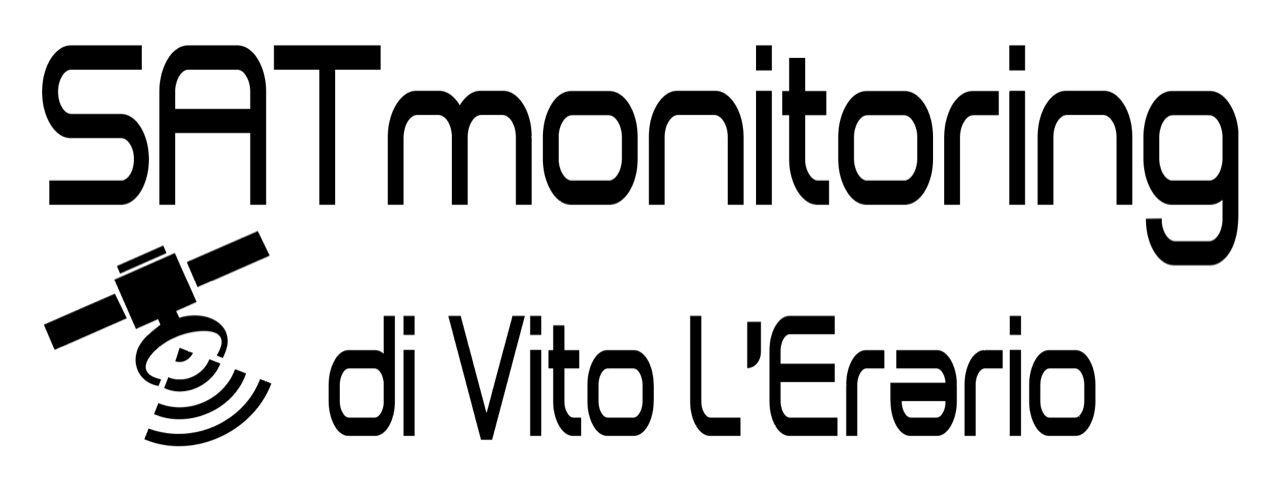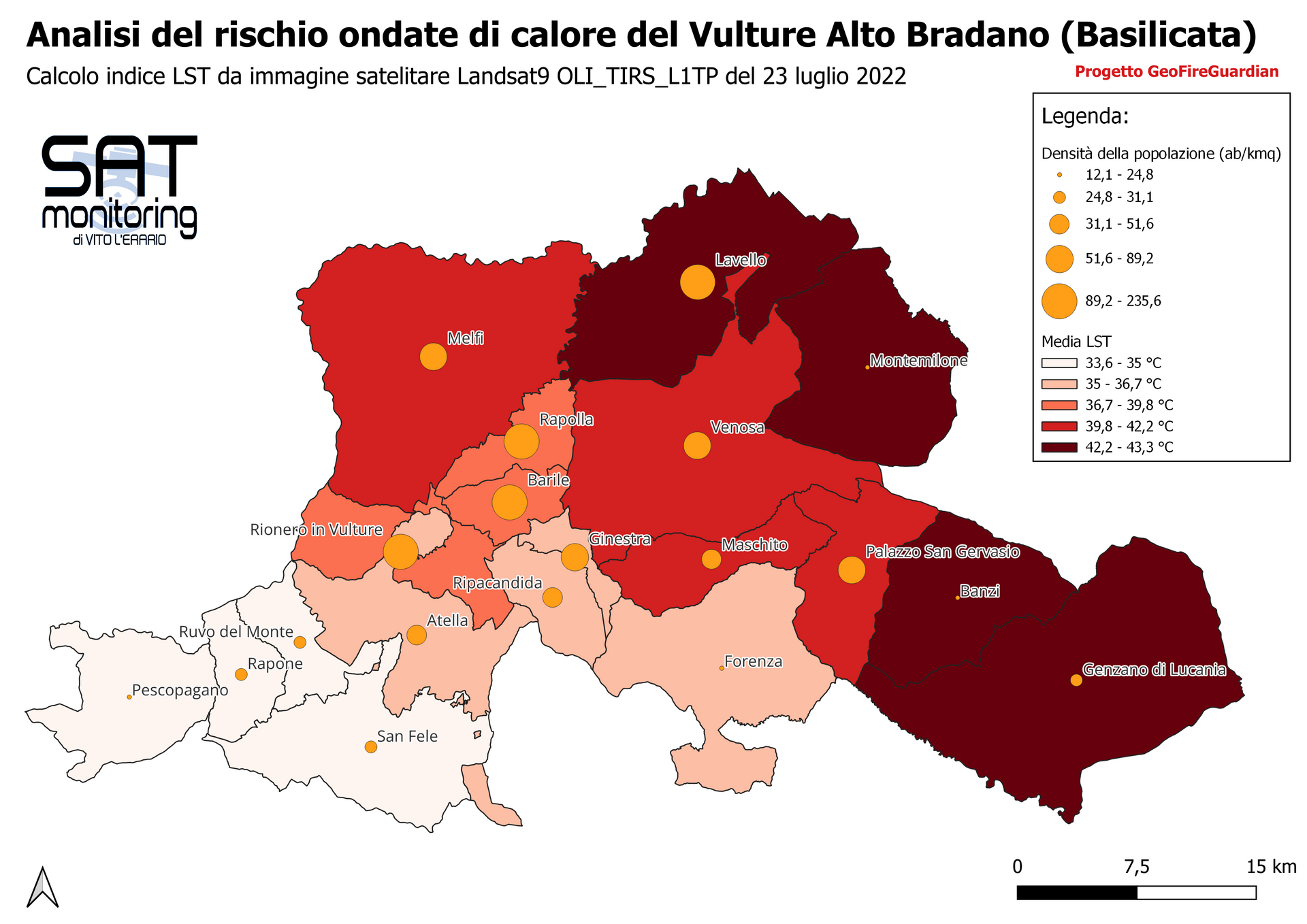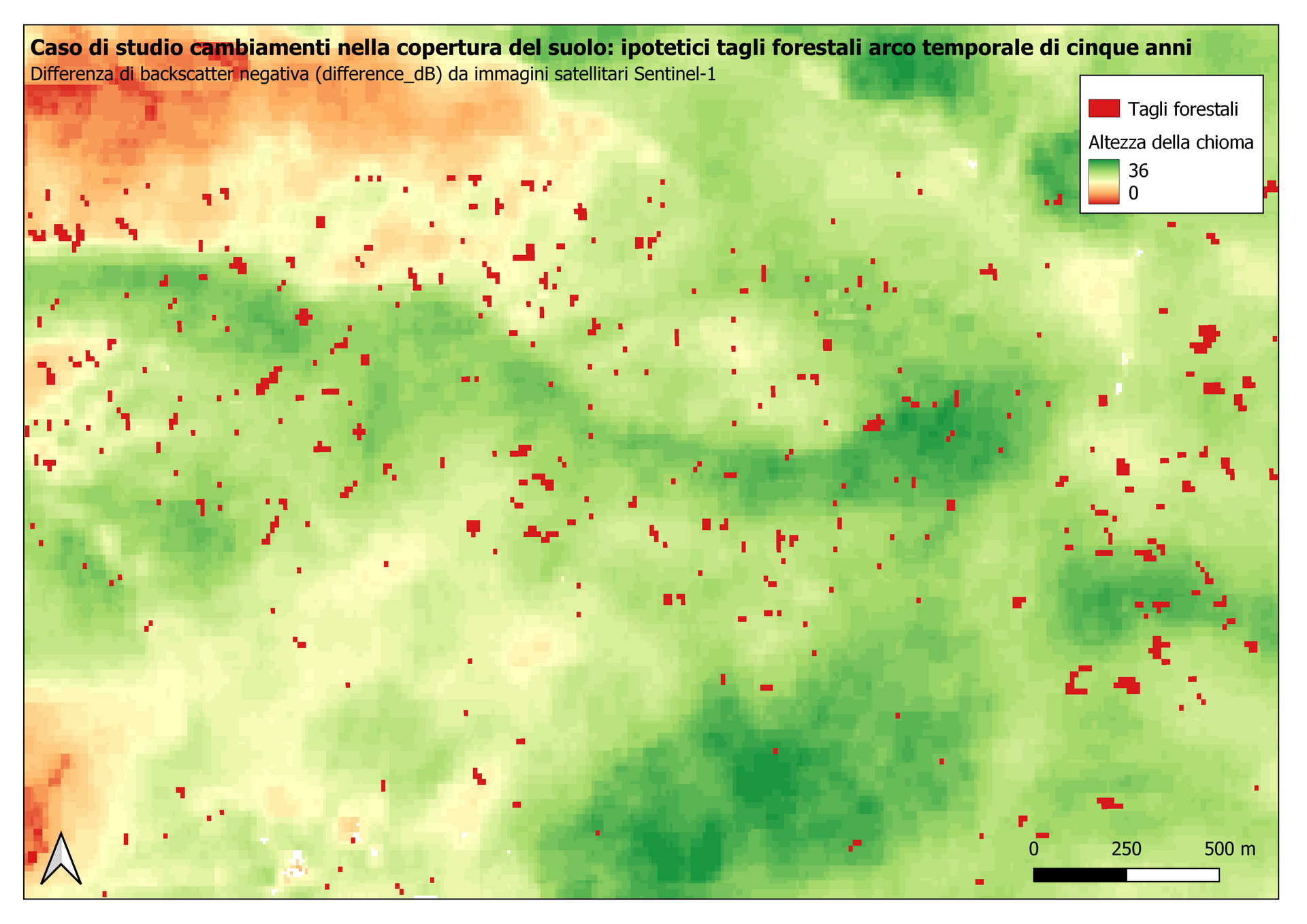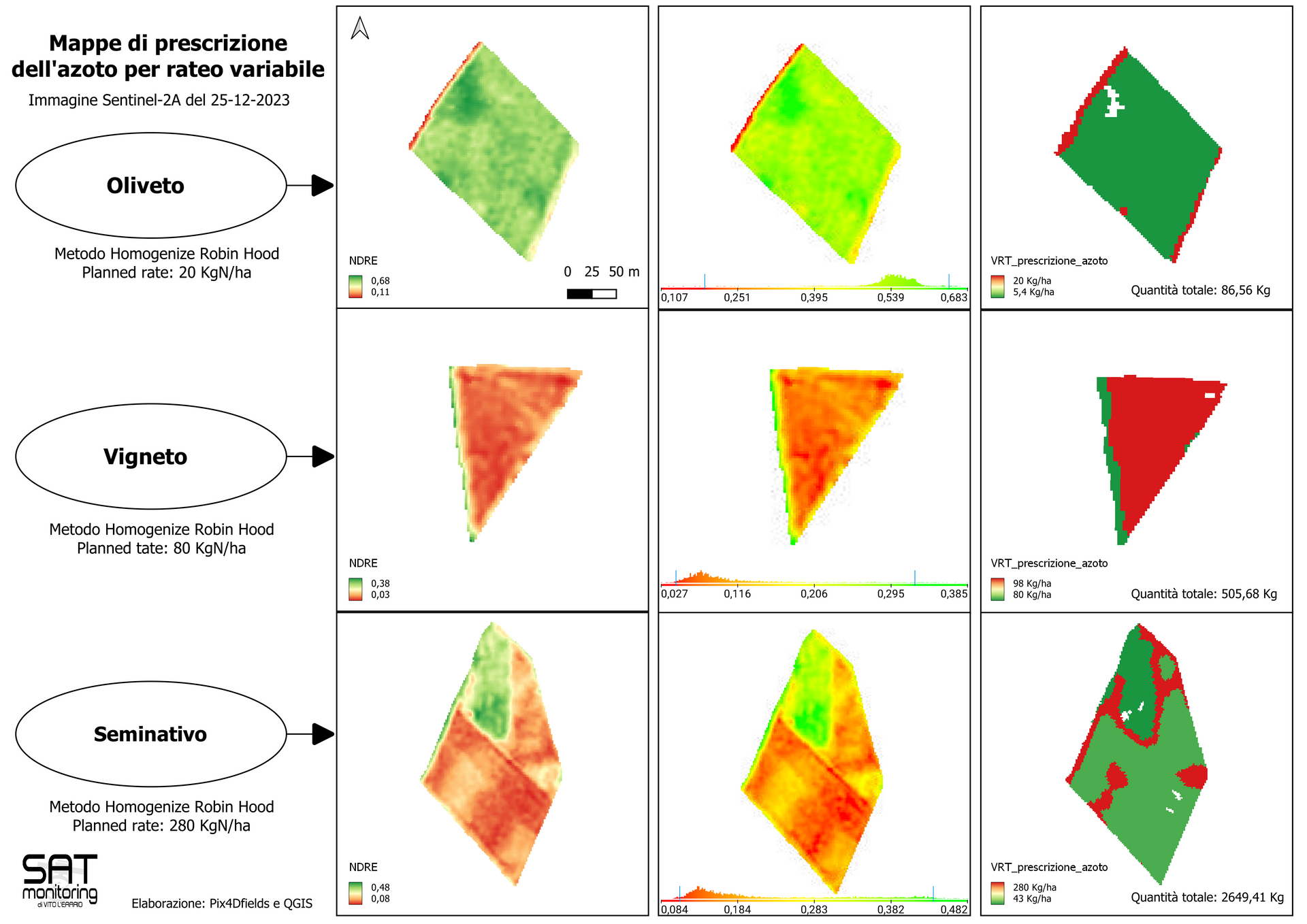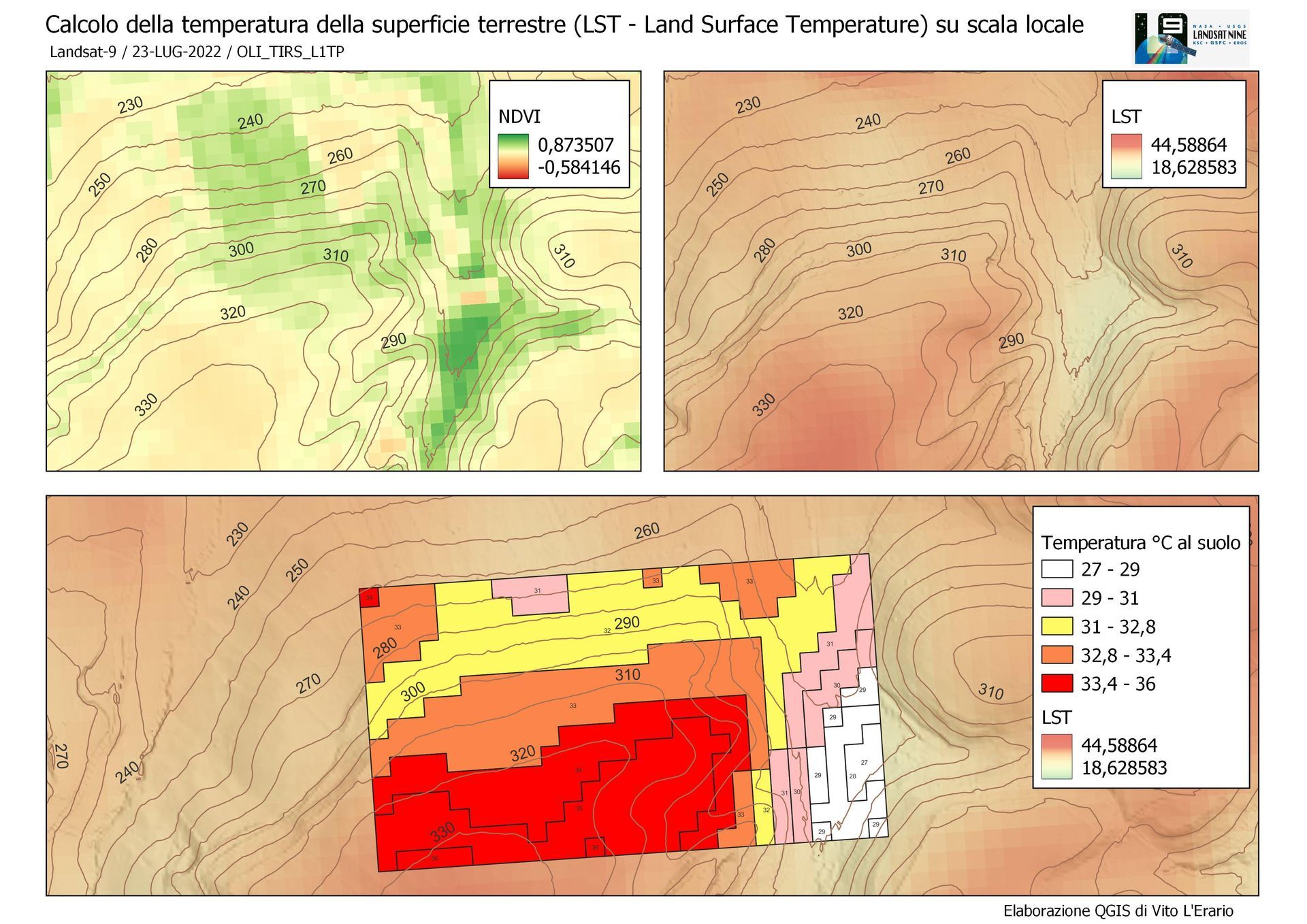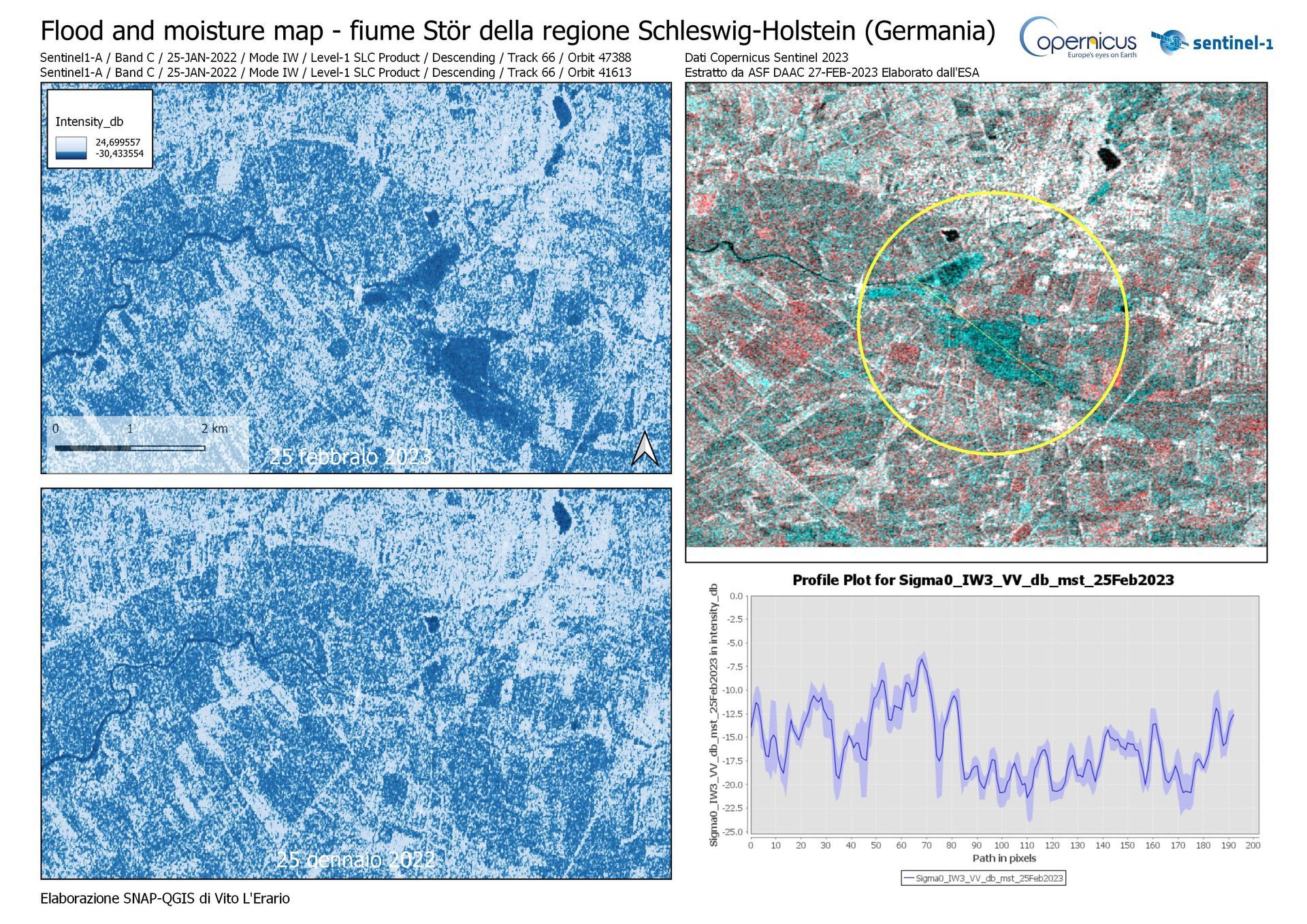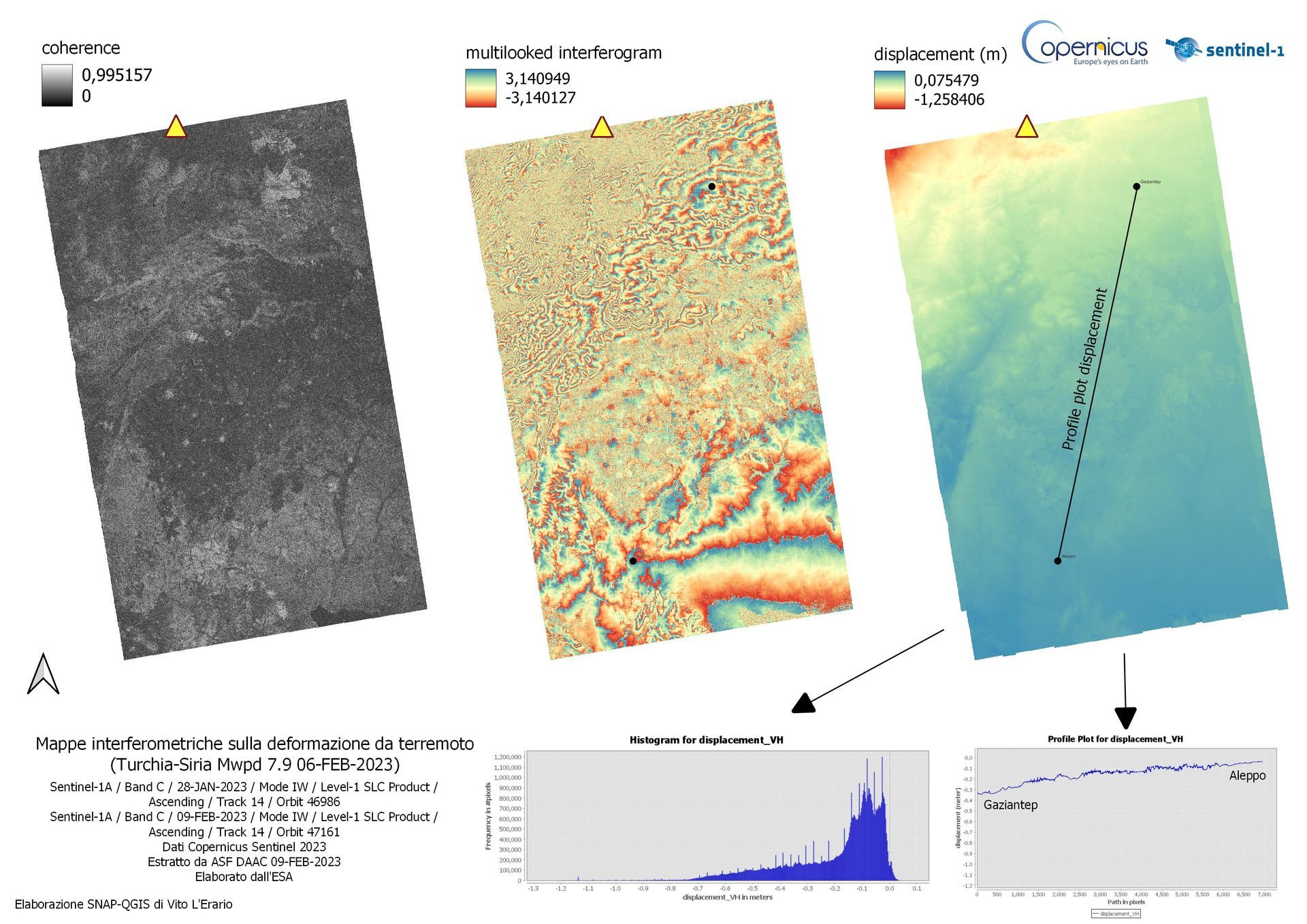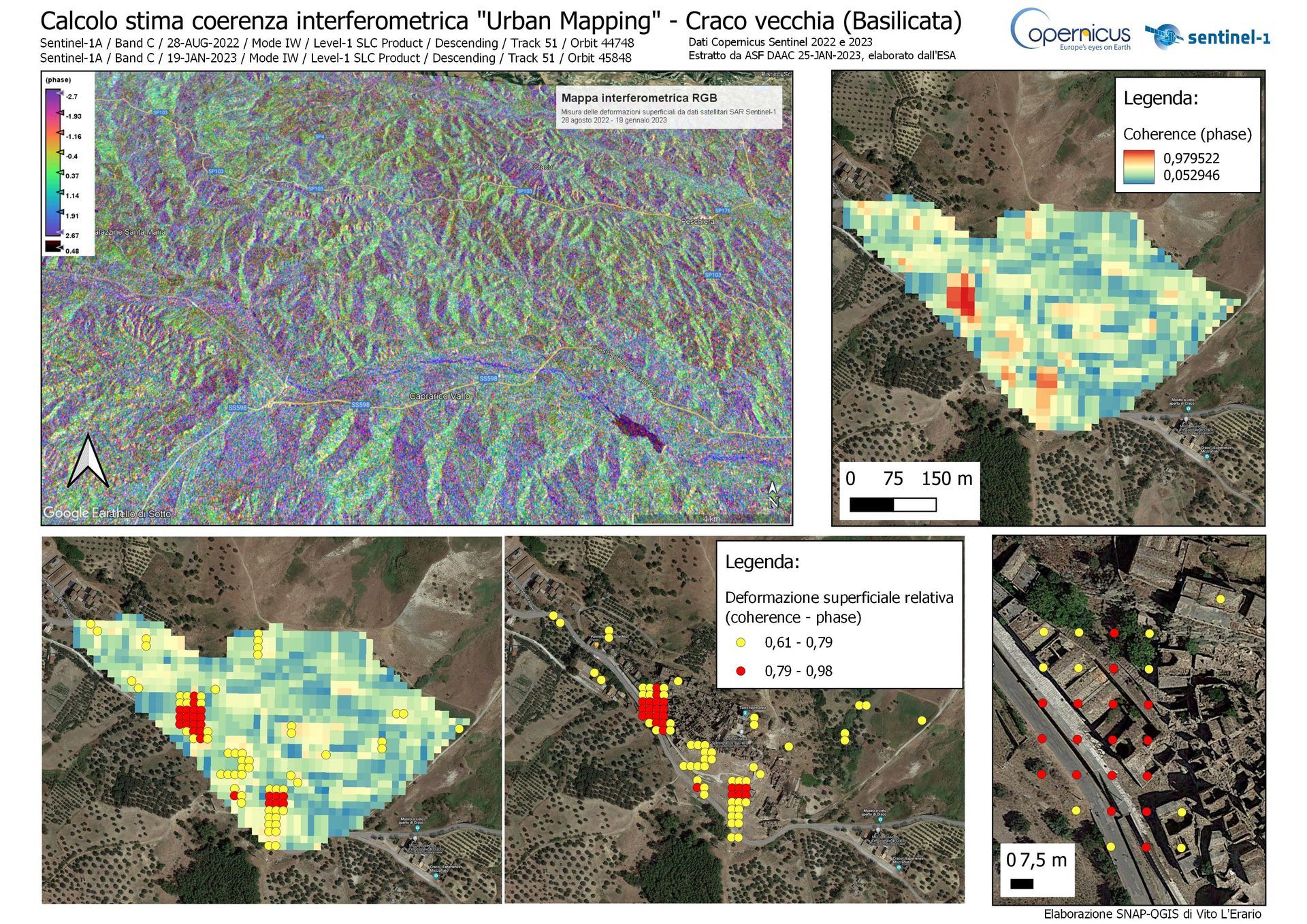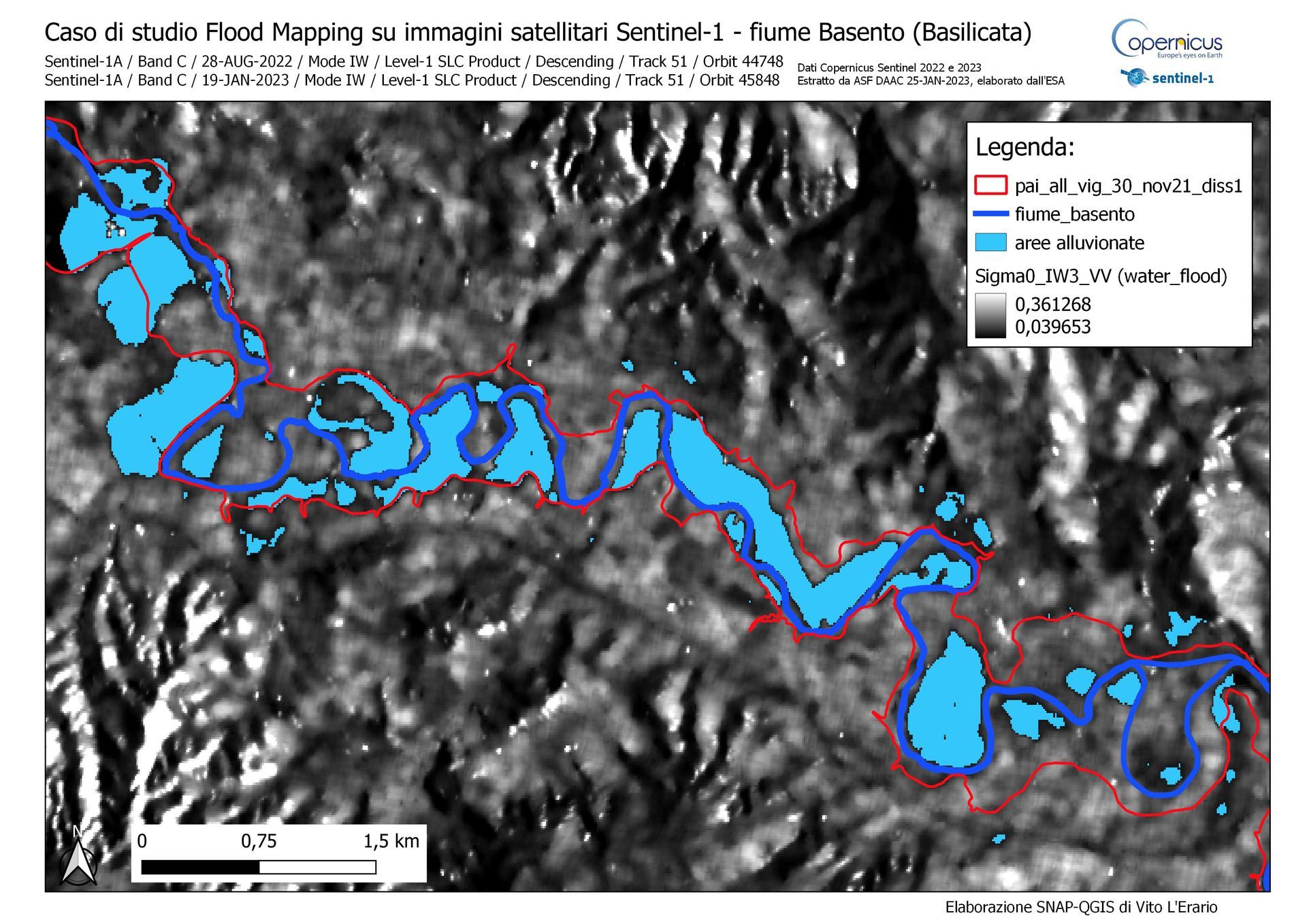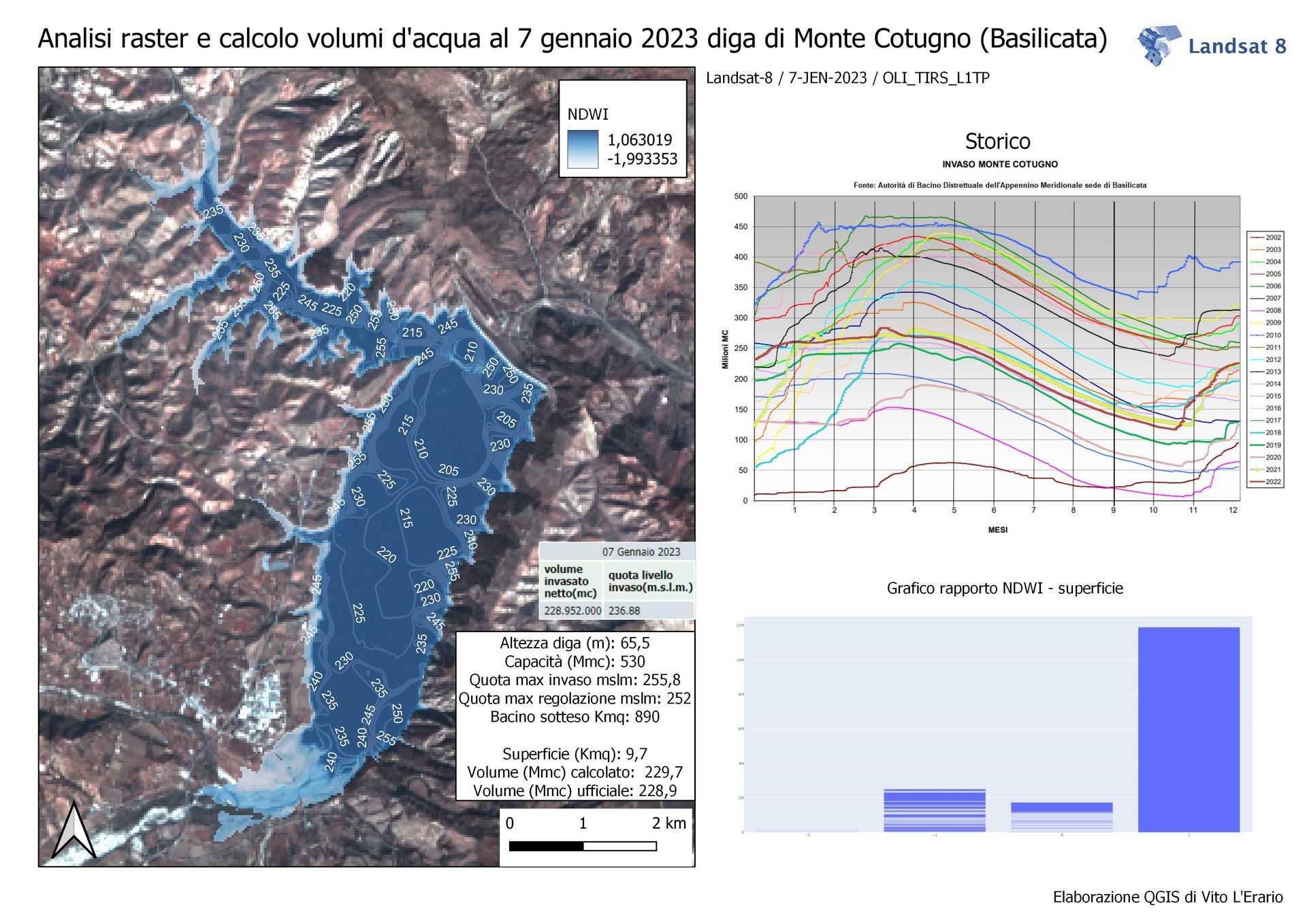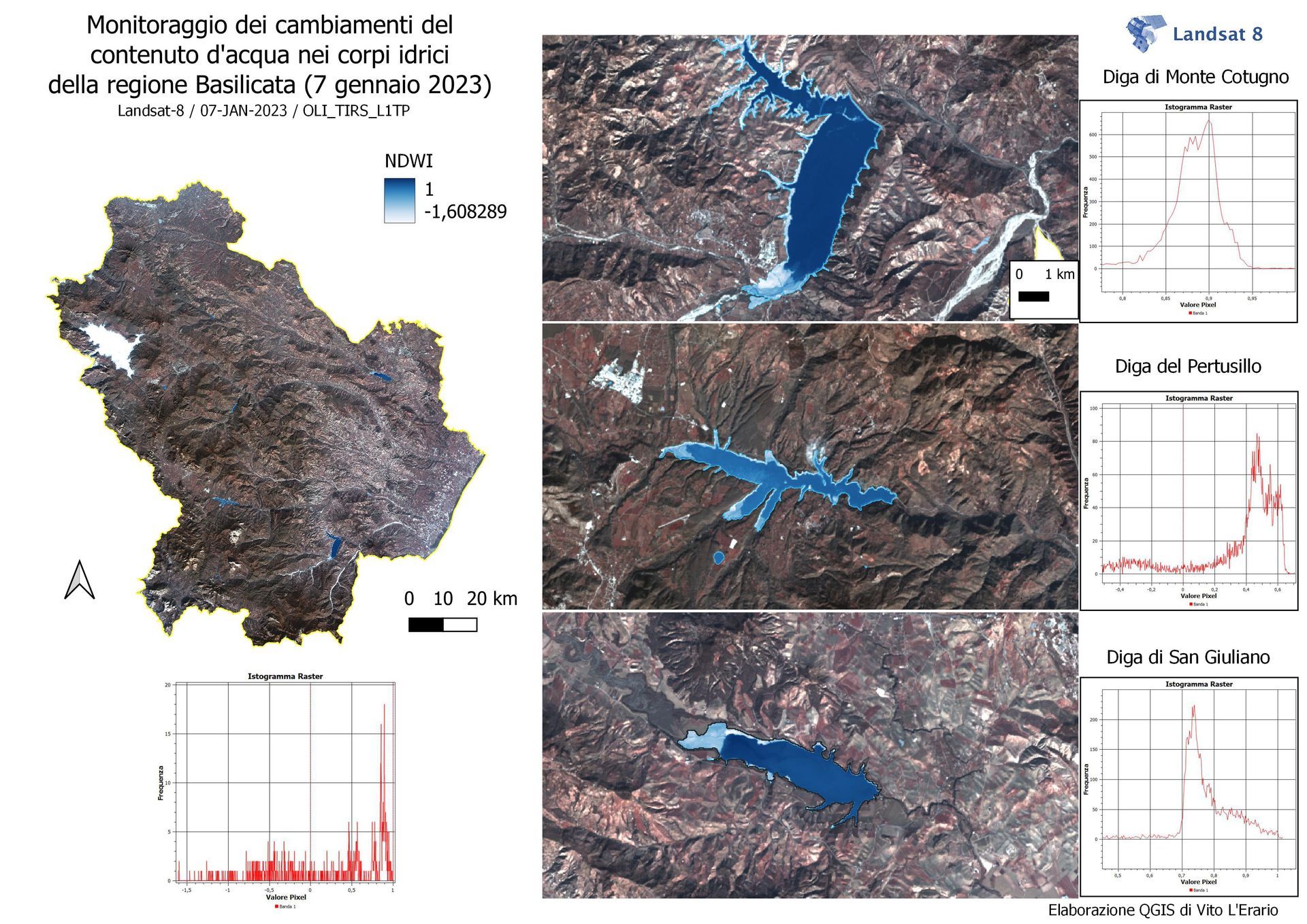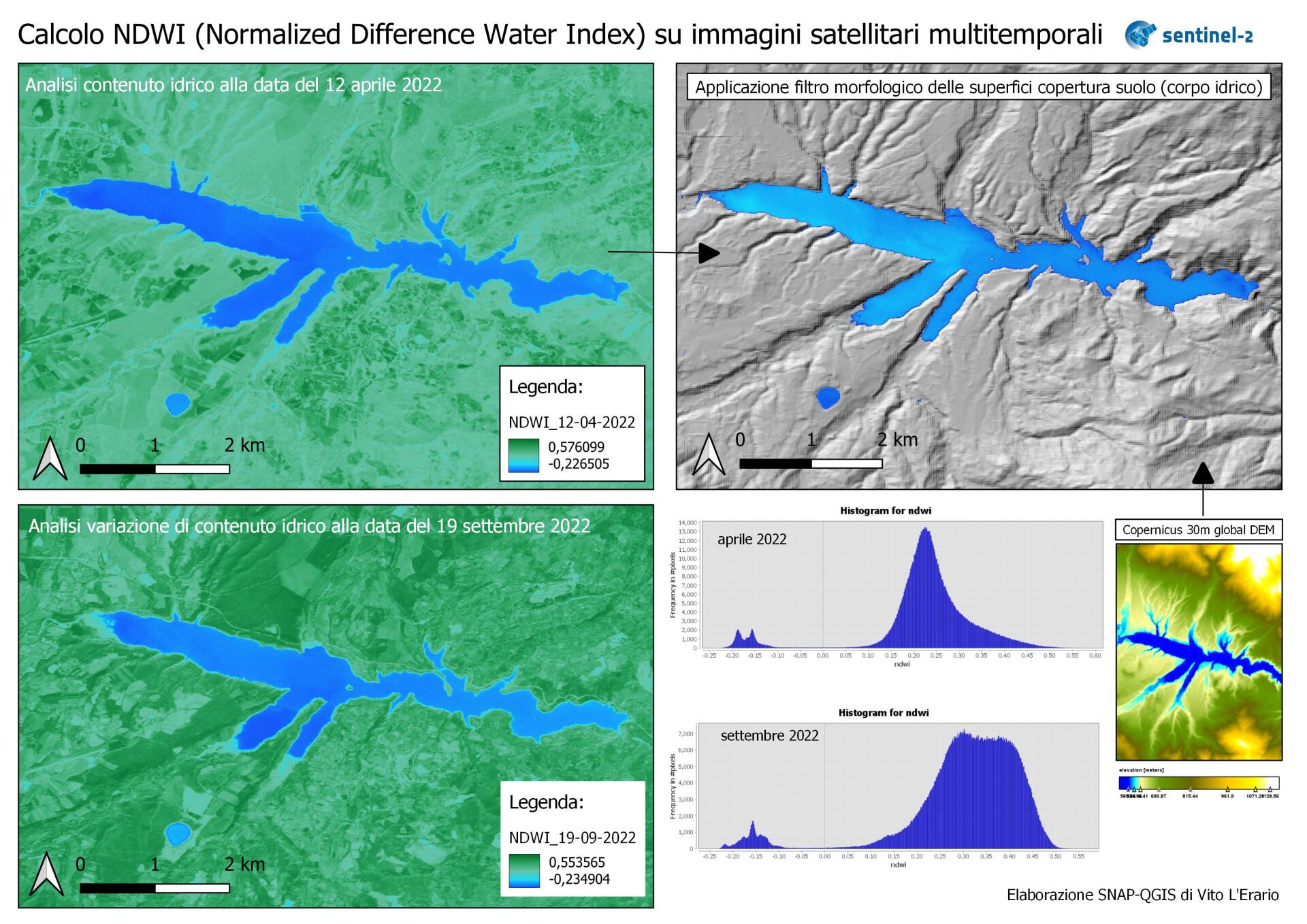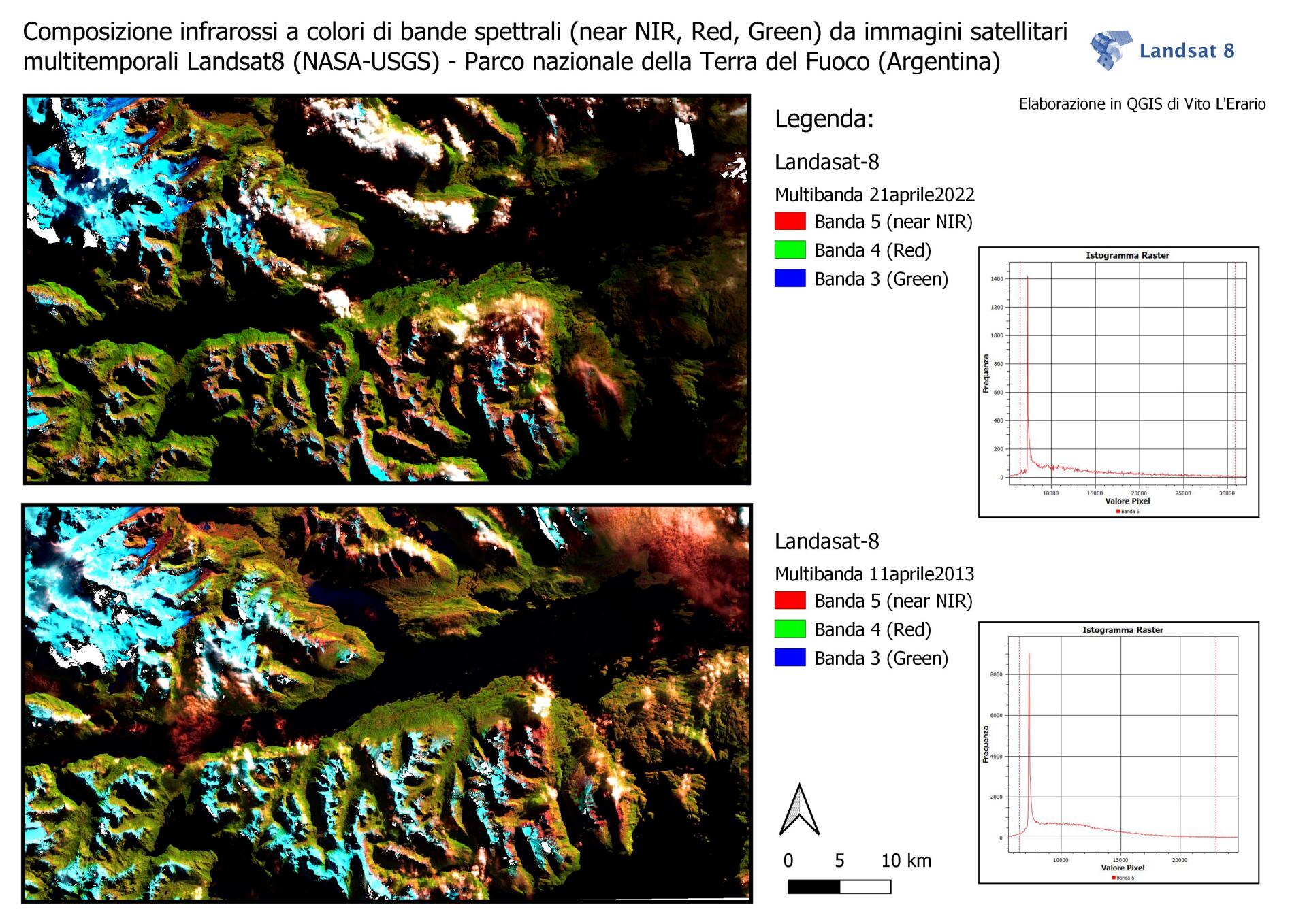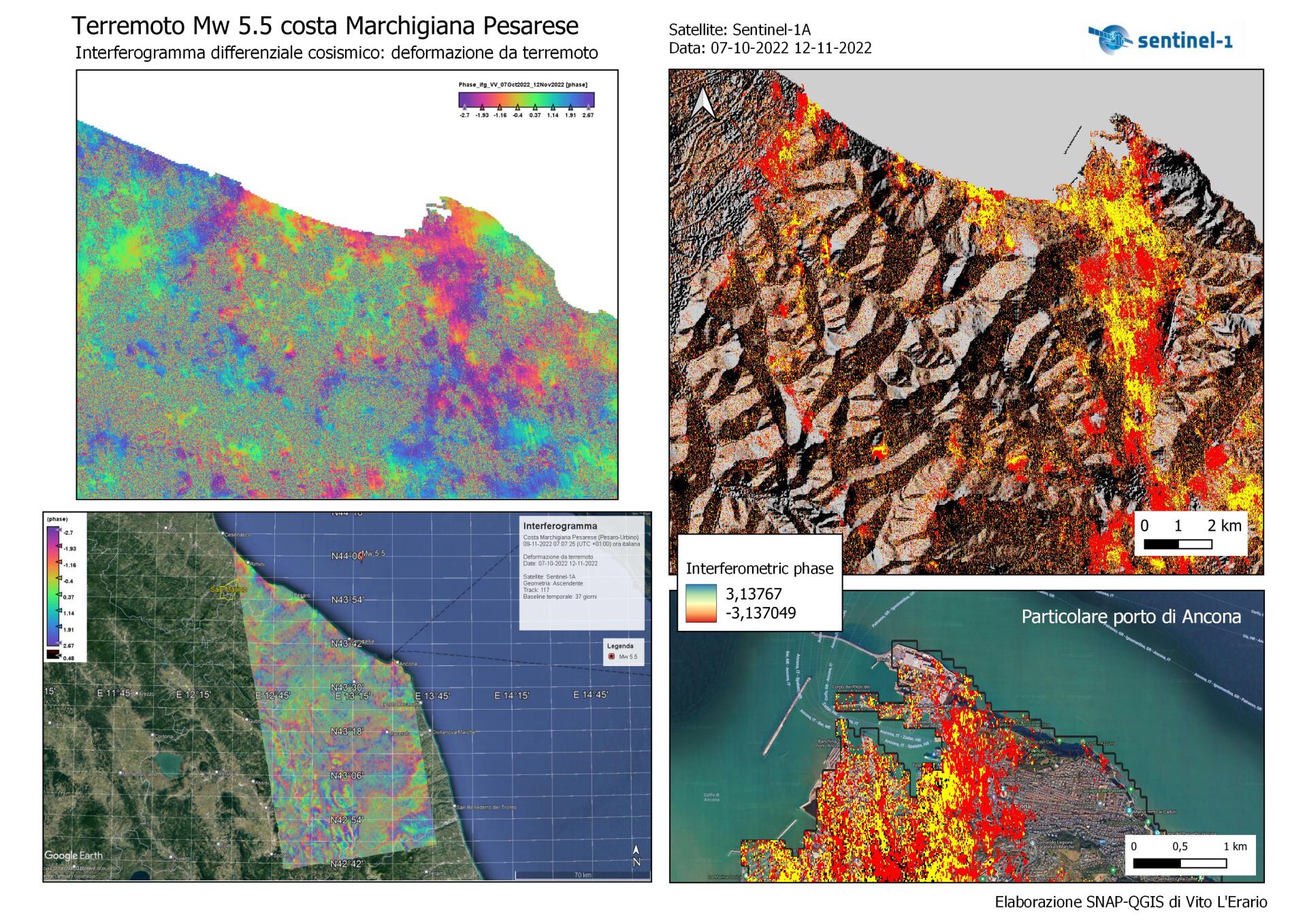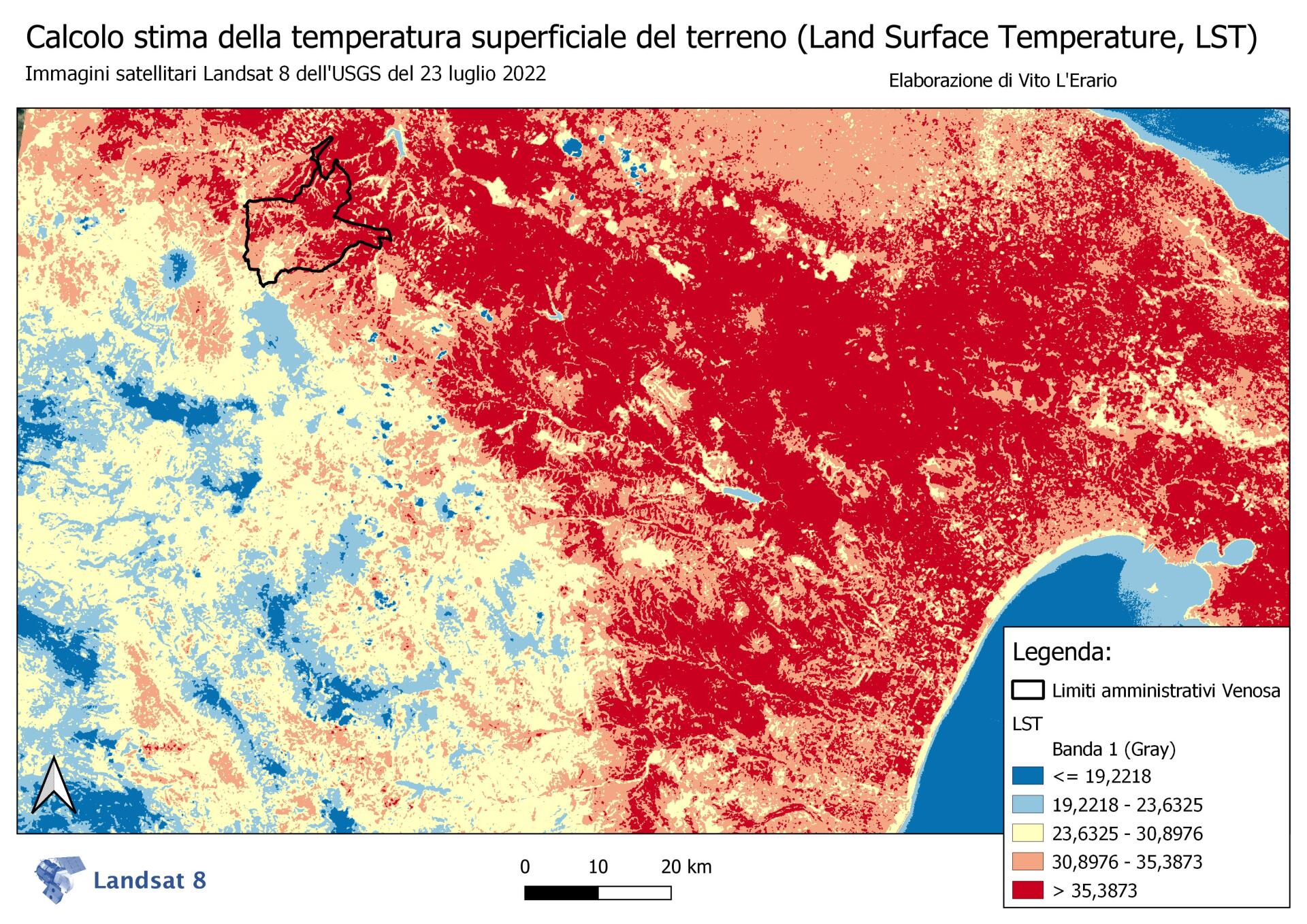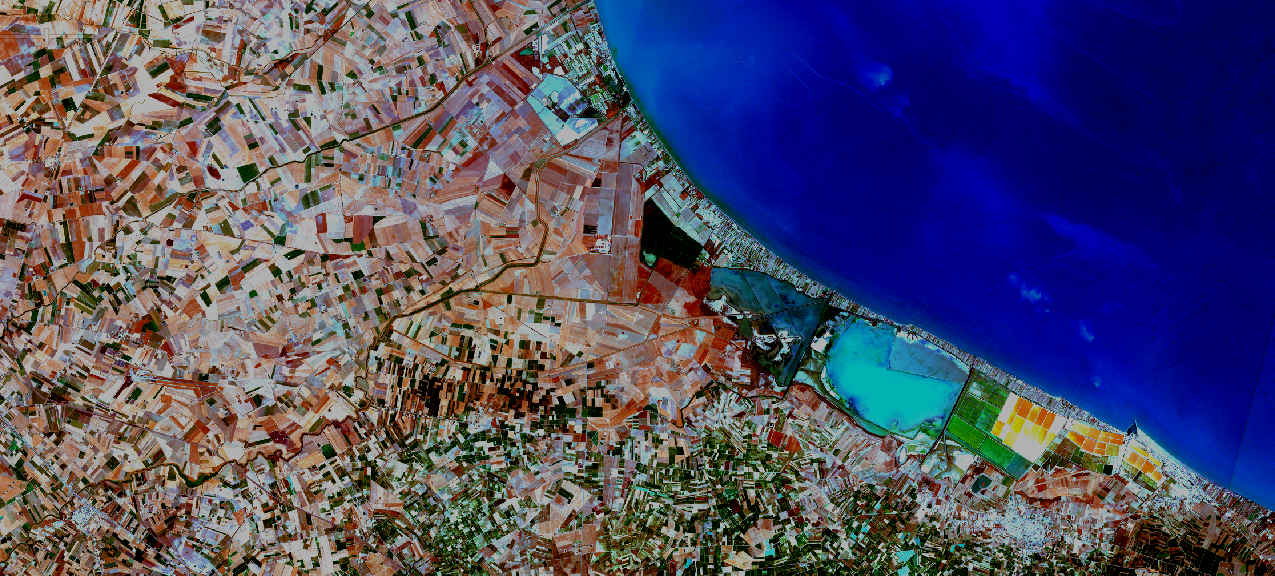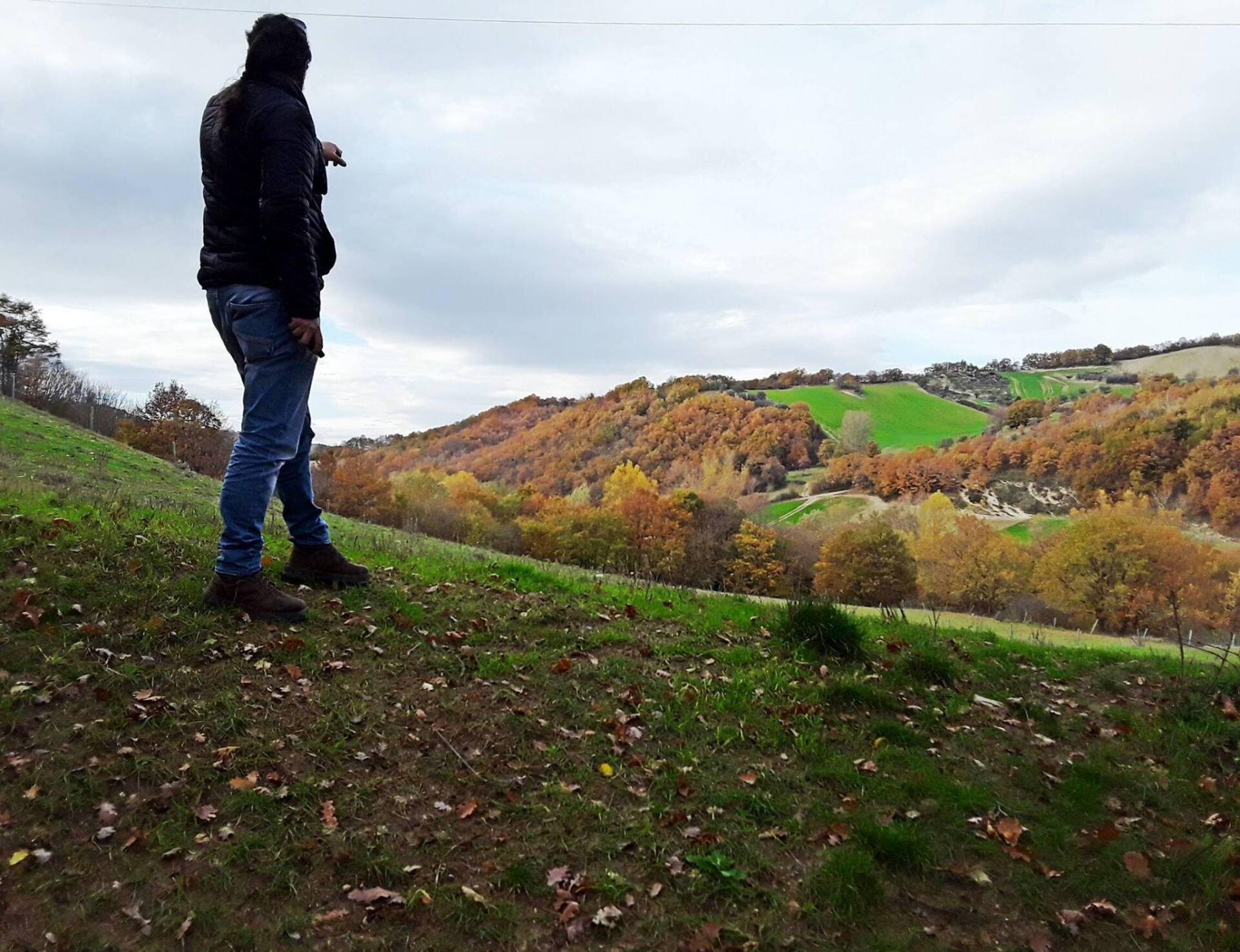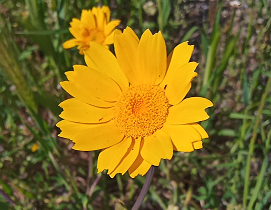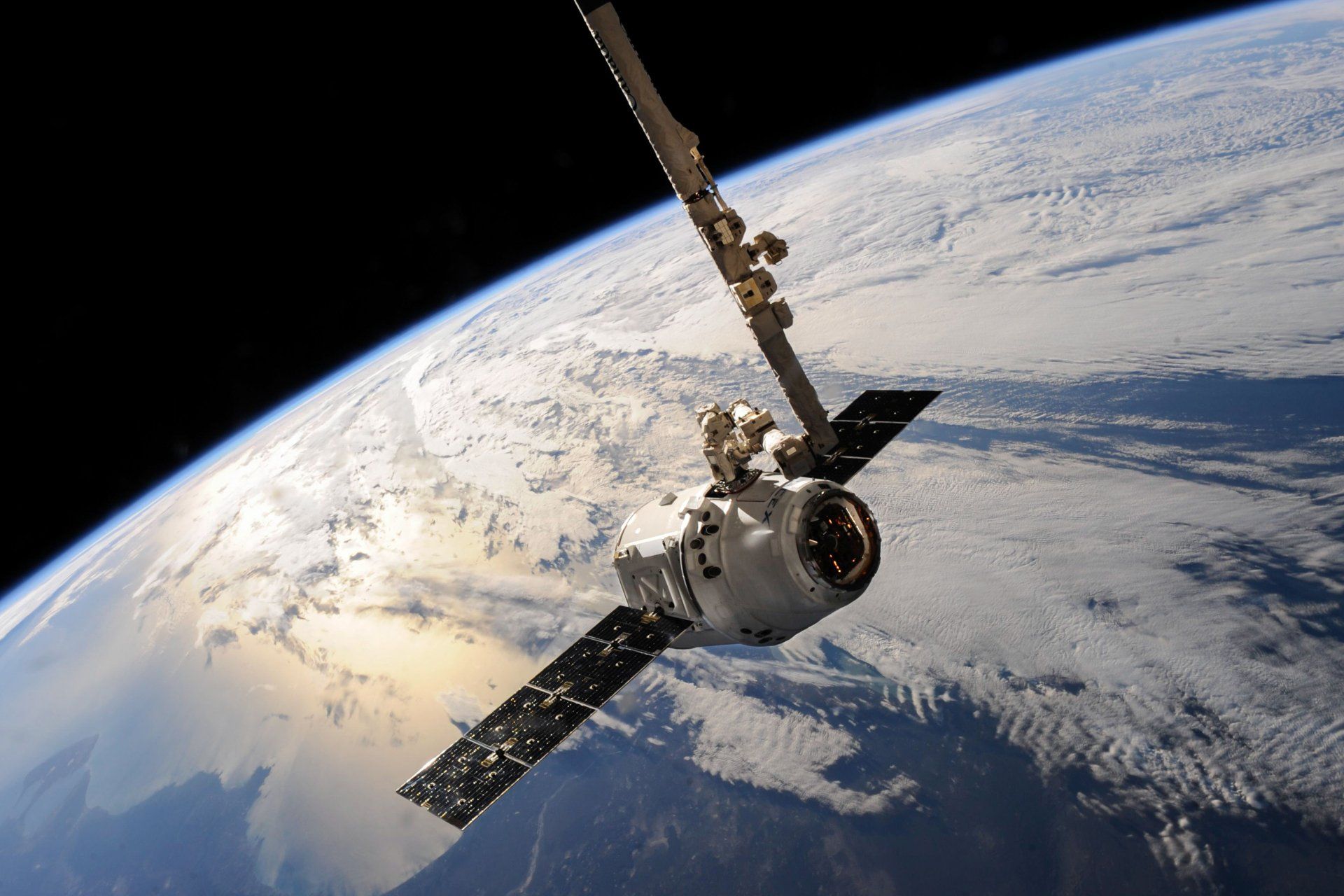Last news
NASA's TOPS (Transform to Open Science) Open Science 101 for community open data science
Training path with the priority of developing a training infrastructure on the best practices of open science
April 2024
Completion of Module 2 on open tools and resources and awarding of the badge.
Objectives achieved:
- Define the fundamental elements of open science: research products, the “use, make, share” framework and the role of an open science and data management plan. List and explain the purpose of the resources used to discover and evaluate open science products research for reuse, including archives, search portals, publications, documentation such as README files, metadata and licenses. Develop a high-level strategy for data creation and sharing that uses FAIR principles, incorporating a data management plan , which tracks them and authors with persistent identifiers and citations, and uses appropriate data formats and tools for creating and sharing results. Describe the software lifecycle and design a high-level strategy for creating and sharing that considers the use of a software management plan, the tools needed for development, including source code, kernels, programming languages, third-party software, and version control, and the tools and documentation used to publish and curate open software. List resources for sharing research products, including preprints, open access publications, reference management systems, and resources to support reproducibility.
February and March 2024
Completion of Module 1 on the ethics of open science and award of the badge.
Objectives achieved:
- Meaning of open science, good practices, benefits and challenges of adopting open science. Description of open science practices, including considerations when drawing up a management plan and activities under the Use, Create, Share framework. Evaluation of the available options of certain research products whether or not they should be open. Ways to get in touch with other realities that are part of the open science community.
Formative training program ARSET (Applied Remote Sensing Training Program) della NASA
February 13, 2024
Overview of SeaDAS 8.4.1 for processing, analyzing, and visualizing optical remote sensing data for water quality monitoring.
October 24, October 31 and November 1, 2023
Detection and monitoring of floods, sea ice and subsidence due to groundwater extraction, with SAR (Synthetic Aperture Radar) satellite data.
Collaborations
DXC Technology Italia
2023: calculation and evaluation of the seasonal average soil moisture index with Sentinel-2 data from the Copernicus and Corine Land Cover 2018 program for agricultural and forestry areas.
Skills
Remote sensing: analysis of images acquired from satellite and airborne platforms (UAS*)
- Passive remote sensing: basic operations for territorial monitoring and operational applications based on Big Data Copernicus Sentinel-2 mission and Earth Explorer USGS Landsat8-9 constellations; calculation of spectral indices (humidity, fires, vegetation, water bodies, earth surface temperature) with SNAP (ESA) and QGIS toolbox; multi-temporal analysis of the territory, automatic classification techniques for unsupervised and supervised images (machine learning); techniques and analysis of digital terrain models; Active remote sensing with SAR data (Synthetic Aperture Radar) Sentinel-1 constellation of the Copernicus program: exploration of radar data with VV and VH polarization; radar metadata analysis with SNAP toolbox; creation of images of breadth and intensity; urban area detection, urban footprint and back scatter differences, offset tracking (surface velocity fields of glaciers); interferometry (calculation of soil deformation, earthquakes, volcanic eruptions, flood events, subsidence, urban mapping). Precision agriculture: tools and techniques for economic and environmental improvement in the agricultural sector; monitoring and data acquisition from ground, satellite and airborne sensors (drones); creation of fertilizer and nitrogen prescription maps.
GIS Open Source
- QGIS: geographical analysis, database, raster and vector geoprocessing, digital terrain models, hydrological analysis with DEM; automatic classification of unsupervised and supervised images (machine learning). WebGIS: web mapping applications, webgis creation with QGIS server and Lizmap, configuration and provision of WMS and WFS services.
* A1/A3 A2 open sub category UAS (drone) pilot, in the flight training planning phase and obtaining the relevant academic certification.
The projects
The processing of data obtained from satellite and airborne images (drones) can contribute to the mitigation of expected event scenarios, also thanks to the analysis and multi-temporal study of the territory. In an era in which the phenomena produced by the climate crisis and the increasingly expected extreme events are affecting the social and economic life of the entire planet Earth, concrete actions need to be implemented.
Monitoring of the Earth Environment System (SATmonitoring) is part of the Earth Observation panorama and intends to actively contribute to the search for immediate solutions.
Here are some examples:
-
GeoAI against fires
BRAM (Boschifire Risk Assessment Model) is an experimental predictive model on the risk of fires spreading from agricultural fields towards woods and forests. The combined use of SAM and Random Forest algorithms to identify wooded areas close to field fires (stubble burning) is based on a Random Forest classification and short-wave infrared RGB images (Sentinel-2) specially segmented thanks to GeoAI . The combination of these techniques can provide a first overall and detailed view of particular areas at risk such as protected areas.Button -
Photosynthesis SAM segmentation
Segment Anything (SAM) is a pre-learning artificial intelligence model that allows you to generate object masks from satellite images. The higher the resolution, the greater the precision of the GeoAI model which, in this case, was applied to a Sentinel-2 image from the Copernicus program. The objective of the segmentation was an initial identification of coniferous forests with active photosynthesis for a possible subsequent classification. The method can return important information on the health of woods and forests, but also to monitor agricultural crops.Button -
Heat waves
With the summer season that awaits us, in addition to the classic "sunbathing" for sea lovers, according to scientists, on land (but also at sea), temperatures will be increasingly extreme. The heat waves of 2023 were the example: increasingly hotter cities and risks to the health of the population, especially for the elderly. Then there is the chapter of fires, devastating for the environment, agriculture and human health itself. In this demonstration elaboration, an analysis of the risk of heat waves in the municipalities of Vulture Alto-Bradano (Basilicata). However, the thermal data from the Landsat-9 (USGS-NASA) satellite images processed refer to the month of July 2022. The municipality most at risk in terms of average LST and population density is Lavello, immediately followed by Melfi, Venosa, Palazzo San Gervasio and Maschito. It is urgent that municipalities equip themselves with a specific "heat island plan" to be integrated into the already existing municipal Civil Protection plansButton -
LST differential
The calculation of the land surface temperature differential (ΔLST) allows the development of urban heat island (UHI) maps using land use and statistical data. In this example case, we produced a 15 km buffer from a centroid and calculated the NDVI and LST indices from USGS/NASA Landsat 9 satellite images (bands 4, 5 and 10) at 30 m/px resolution. Subsequently, the temperature anomalies with respect to non-urban areas and the land use analysis were calculated thanks to the Corine Land Cover 2018. The result returned the LST averages, which can be interpreted as the difference in temperature compared to pre-established points in a crown of area, resulting from the buffer difference 15 and 5 km, from which LST values at least at a distance of 300 m from urbanized land. The LST temperature difference is high in agricultural areas (up to 5°C), lower in wooded areas (up to -9°C). The same procedure can be extended to urban areas to identify heat islands (preferably for neighborhoods).Button -
The MODIS sensor on the thermal
The following processing is the result of satellite thermal monitoring thanks to the moderate resolution spectro-radiometer (MODIS) on board NASA's Aqua and Terra satellites. This sensor measured the Earth's surface temperature during the day with a resolution of 1 km throughout the summer season of 2023 (°C in the legend - Kelvin metadata). The areas with a color scale from red to black indicate ground temperatures above 40°C, coinciding in most cases with areas cultivated with arable land, which after harvesting were affected by fires due to the practice of burning the stubble.Button -
Forestry cuts
From the amplitude of the radar signal from the SAR Sentinel-1 satellite image of the Copernicus program, a series of very important information can be obtained from a forestry point of view. If positive values indicate an increase in radar reflectivity and therefore the growth of new vegetation or an increase in surface roughness; Negative values indicate the exact opposite, i.e. removal of vegetation, construction of new structures or other changes in land cover. By reasoning on the negative values, and in particular on the removal of vegetative cover, it can be established which wooded areas have been subject to forest cuts in a specific period of time.Button -
Monitoring of volcanic eruptions
A comparison with the calculations on the vertical deformation of the ground from the SAR Sentinel-1 interferometric pair (of 6 and 18 December 2023) and a composite (super resolution) short-wave infrared from the Sentinel-2 image where the lava front of the eruption of 14 January 2024, which affected the area of the town of Grindavìk (Iceland). That the ground was rising had been known for some time, as the maps and the histogram demonstrate. It remains to be seen whether the underground magma can leak out again with new fissure eruptions right inside the town of Grindavìk.Button -
Changes following fires
Urban footprint RGB: RGB composite of the urban footprint. Red indicates coherence, green the average of the back scatter and blue the difference. Composite NBR: Combination of four distinct NBR (Normalized Burn Ratio) images, each acquired at different points in time. This composite provides a consolidated, temporal representation of changes in vegetation and soil conditions following fire events. The analysis combines spectral information from different NBR processing, allowing for a more in-depth and comparative assessment of areas affected by fires over time.Button -
Estimated population 2100
SEDAC is a NASA socioeconomic applications and data center that provides a variety of studies and information on urban, rural, and total population dynamics. Using the open service, this map was developed: by crossing the 2018 data on the urban footprint (from Sentinel-1 images) and the SEDAC population forecast for 2100, a "forecast model" for the Vulture Alto Bradano is obtained. The areas where a greater concentration of population is expected are: in the lead Rionero in Vulture (137 inhabitants/km2), Atella, Barile, Rapolla and Melfi; followed by Venosa and Lavello, the area of San Nicola di Melfi currently an industrial site and towards Gaudiano. Data Source: SEDAC Gao, J. 2020. Global Population Base Year (2010 – 2100) Scaled by 1 km and Projection Grids Based on Shared Socioeconomic Pathways, Revision 01. Palisades, New York: NASA-SEDAC.Button -
Urban footprint classification
The use of automatic learning allows us to continue the analysis of the urban footprint and the related multi-temporal changes. The SOM Classification algorithm was instrumental in identifying areas with back scatter differences in a pair of InSAR Sentinel-1 images from the Copernicus program. The classification of the self-organizing images into a map, without supervision, returned information that lends itself to interpretations in the urban context in the presence of interferometric coherence. With coherence > 0.6 it was also possible to identify the so-called differences over a 4-year period in suburban, agricultural and forestry areas. A tool, the SOM Classification, which has already been used in the past in risk assessment. However, "in-depth" analysis of the urban footprint has proven to be very useful.Button -
Urban footprint
Monitoring the urban footprint from satellite can be of great use for various sectors. In this processing of two Sentinel-1 SAR scenes, with a time span of four years, it was possible to identify changes based on the amplitude images and the estimate of interferometric coherence. In the RGB composite representation, the red color band channel indicates coherence, green indicates the average back scatter, and blue indicates the difference.Button -
Geomorphological elements
The determination of the shapes and geometries of the terrain through "machine vision" to extract geomorphological elements from a DTM (Digital Terrain Model), returns useful information for the analysis. If on the one hand the calculation of the vertical deformation of the soils from 7 InSAR Sentinel-1 images returns data to be analyzed and studied in depth, on the other hand, the geomorphological elements, slope and slope, can help the analyst to better identify the anomalies provided by the data satellite.Button -
Variable nitrogen prescription rate
Mapping service to provide indices and prescription maps for variable crop rates, scheduled and controlled irrigation, and yield thanks to testers (conductivity meter and ph meter). In the figure, an example of a nitrogen prescription map for an olive grove, a vineyard and arable land. Using the Harmonize "Robin Hood" method (take from the rich to give to the poor), the quantity of nitrogen needed for the three crops was calculated from the Sentinel-2 satellite image of the Copernicus program. With the drone remote sensing service it is possible to obtain centimeter precision of the images acquired, which can subsequently be analyzed also with the preferable collaboration of an agronomist.Button -
Protect vineyards from fires
From the supervised classification with the Random Forest algorithm from composite RGB NBR (Normalized Burn Ratio) index of four distinct multi-temporal images, to a new "training input" of the vineyards thanks to the density and concentration maps based on the centroids and subsequent buffers of vineyards exposed to fire risk. The assessment was based on areas burned in summer 2023 and could extend to historical datasets. With SAGA Next Gen tested a new Kernel Density Estimation (KDE) algorithm. The development of density and concentration maps of vineyards associated with the supervised classification of burned areas could strongly mitigate the phenomenon of fires to protect a wine heritage that needs to be protected.Button -
Monitor glaciers
Among the most important effects of climate change is the melting of glaciers and consequent rising seas. In this elaboration with Sentinel-1 SAR data from the Copernicus program, the multi-temporal monitoring of the Perito Moreno glacier located in the Santa Cruz Province (Patagonia) in Argentina. 7 images from 2015 to 2021 were considered for the calculation of the ice deviation in m/day. Procedure with SNAP: application of orbital files, co-registration of images, segmentation and application of the Offset Tracking algorithm, finally geocoding.Button -
Soil humidity and flooding
Hydrological and topographic analysis with new algorithms and therefore new calculations in order to prevent and/or mitigate hydro-geomorphological risk. The SAGA Wetness Index, similar to the Topographic Wetness Index (TWI), is based on the calculation of a Modified Catchment Area from a Digital Elevation Model (DEM) produced by Sentinel-1A. Cells located in valley bottoms with a small vertical distance from a channel provide a more realistic and higher potential soil moisture than the standard TWI calculation. The calculation of this index, thanks to specific SAGA algorithms, is useful for forecasting potentially floodable areas in the event of extreme meteorological events.Button -
Fire classification
Supervised classification with Random Forest applied to the NBR (Normalized Burn Ratio) index is a process that involves using a specific Machine Learning algorithm called Random Forest Classification to classify specific areas or pixels in a satellite image using the index NBR. This index is commonly used to identify and map areas affected by fires or changes in vegetation. The trained model distinguished areas with burn marks (with specific values in the NBR) and areas not affected by fires. The process: 1) Data preparation: collection of satellite images and calculation of NBR index for a given period. 2) Model training: Using pixels with assigned labels (burned and unburned areas) to train the RFC so it can learn to recognize these differences. 3) Image Classification: Applying the trained model to all pixels in the NBR index image to classify and map burned areas and unburned areas.Button -
Fires and soil dryness
What happens after a fire? The organic substance of the soils is compromised, the soils become arid, erosive phenomena are possible, over time the degradation processes can lead to sterility, then to desertification. The set of indices, such as burned areas, soil humidity, aridity, can provide interesting readings of a given territory. In addition to calculating the BSI index, a layer containing the areas burned from low-medium severity to high severity has been superimposed on the map. From a first observation it emerged that soils affected by fires have undergone significant changes in BSI values. Today those soil surfaces tend towards arid, especially with low humidity values. It follows that the analyzes of images processed from satellite observations, in the Sentinel-2 case of the Copernicus programme, are an excellent indication for planning and planning in the short term, forestry and crop improvement interventions, especially to safeguard the biological value, as well as starting a widespread awareness campaign involving all the structures involved, at every level.Button -
Landslides
Calculation of "relative" and "absolute" surface deformation with the interferometric coherence map. Positive values in a soil deformation map prepared from inSAR (Sentinel-1 Copernicus) satellite data could indicate an increase in pressure or tension in the ground due to mechanical stress, precipitation or other conditions. In this case, the analysis concerns areas affected by fire with decreasing humidity values (change detection NDWI). Changes in vegetation, thermal variations, subsidence itself, weak vegetation present and recession of the ground can be triggering factors of erosive phenomena due to swelling of the ground (for positive values of deformation/changes). The interpretation of ground deformation data always requires an in-depth evaluation with the direct involvement of geology and geotechnical experts.Button -
Flood risk based on historical data
Machine learning, albeit with some problems, can be a useful tool for mapping predicted floods on historical data sets. Academic studies state that the KMeans Classification and SOM Classification algorithms are both used for risk assessment. Using a specific dataset from Sentinel-1 satellite images from the Copernicus program, and in particular an interferometric pair together with single SAR images, it emerges that, during an extreme meteorological event, areas with certain geomorphological characteristics are more predisposed to these phenomena, especially if you analyze soil humidity data corresponding to water drainage basins: the so-called recharge areas. Knowledge of the "vulnerable" points allows the implementation of preventive and/or mirigation actions.Button -
Geomorphological monitoring
This cartographic processing clearly shows the changes in agro-forestry biomass following a fire that occurred on Monte Vulture (Basilicata), a regional park and site of community interest. From the hydrological analysis, the drainage networks of the waters that feed the natural hydrographic network were extrapolated. With the rainy seasons, the risk of landslides and/or flows in the areas affected by the fire is very high. This is an example of the open data service implemented thanks to a specific WebGIS that is always being updated. The integration of the "change detection" of the NDVI index (Normalized Difference Vegetation Index) allows us to obtain useful information in terms of prevention relating to geomorphological risk.Button -
Air quality
Air quality analysis of the Lombardy region, on atmospheric concentrations of sulfur dioxide or sulfur dioxide (SO2) with a time interval from 15 August to 9 September 2023, with satellite data (ESA Sentinel-5P) and Google Earth Engine ( GEE). The average SO2 in mol/m^2, which transformed into molecular mass (1 mole = 64.0638 g/mol), gives us a value of 0.0013362 g/mol of sulfur dioxide present in the skies of Lombardy. The calculated maximum is 0.03555 g/mol and concerns the areas of Mantua and Besnate. Obviously they are the bodies responsible for ensuring the monitoring of air quality with "ground-based instruments". However, the Tropomi sensor allows us to keep the entire planet under observation on variations in SO2 concentrations.Button -
LST in the hottest month
First processing of the LST (Land Surface Temperature) index from Landsat8 satellite images (USGS/NASA) dated 18 July 2023. Peaks of 50°C on the ground were recorded in some areas of Basilicata. The processed satellite image shows LST data from the period before the heat wave that hit Italy in the last week of July 2023, therefore the index would lend itself to significant increases in ground temperature. However, among the hottest days of this past July was certainly July 25th, with atmospheric temperatures recording 37°C in Potenza, 44°C in Policoro, 45°C in Matera. The calculation of the LST index on the earth's surface temperature can be useful in monitoring the urban microclimate and soil conditions in agriculture.Button -
Atmospheric monitoring Ozone
Ground-level ozone (O3) can have negative impacts on human health, the environment, agriculture and climate. Different from stratospheric ozone, which protects us from solar radiation, it is a real pollutant produced by industrial activities and vehicular traffic. It is a greenhouse gas responsible for global warming and contains nitrogen oxides (NOx) and volatile organic compounds (VOCs). High concentrations of O3 can also cause damage to vegetation, such as leaf necrosis, alter photosynthesis and reduce agricultural production. The two maps of Italy show how atmospheric ozone concentrations have changed in two months (June and July 2023). The max and min ozone values are standard values that reflect the typical range of O3 concentrations in the troposphere and are able to show significant changes in ozone over time.Button -
NO2 atmospheric monitoring
Again using GEE and the Sentinel-5P satellite of the Copernicus program, these two maps were produced on the atmospheric concentrations of nitrogen dioxide (NO2) for the month of July 2023: from 1 to 15 and from 15 to 30 July. In the first image it is immediately clear that NO2 concentrations are more present in northern Italy, with the central-south including the areas of Rome, Naples, but also Taranto, Catania and Syracuse. In the second image, however, we can see an almost saturated value of NO2 concentration in Naples, and more precisely in the area of the international airport, but also in Taranto in Puglia.Button -
SO2 atmospheric monitoring
Sentinel-5P is an ESA (European Space Agency) satellite launched on 13 October 2017 to monitor air pollution. It is equipped with an on-board sensor called Tropomi (Tropospheric Monitoring Instruments). Thanks to Google Earth Engine (GEE) and atmospheric data from Sentinel-5P (Precursor), this map of Basilicata was developed (based on urban false color from Landsat8 satellite image) with the atmospheric concentrations of sulfur dioxide or sulfur dioxide ( SO2) with a time interval from 1 July to 27 July 2023. The figure alongside portrays the "plume" of SO2 coming from Sicily,Button -
Soil moisture and LST index
Sentinel-1 SAR data from the Copernicus program can also help us understand soil moisture. If compared with other processing with optical data (in the Landsat-9 NASA/USGS case) - represented, in this case, by the map on the LST (Land Surface Temperature) index - and with the areas burned in the previous year - from which the normalized dNBR (Normalized Burd Ratio) index - it is possible to analyze the potential fire risk of certain areas. A good forecasting model, or rather, preventive on the fight against forest fires. Many areas affected by the 2022 fire coincide with areas of low humidity as of July 12, 2023.Button -
Areas burned and LST index
This processing compares the data from the burned areas with the 2022 land surface radiant temperature (LST) for the Basilicata region. After normalizing the NBR (Normalized Burd Ratio) index for a period from 5 June to 27 October 2022, the pixels with values of 0.35 classifiable by the USGS chromatic scale as of moderate severity were isolated and the areas therefore localized covered by fire. Obviously the burned areas also concern the phenomenon of stubble burning, an obsolete practice which it is hoped one day will be banned forever.Button -
Areas burned
With the summer season the great danger of forest fires is cyclical. Prevention is the first step to take. In this QGIS processing, the areas covered by the fire of the 2022 season thanks to the calculation of the NBR (Normalized Burd Ratio) index from Landsat9 (NASA-USGS) satellite images. The index was then normalized (also to reduce atmospheric conditions) with the NBR difference (pre and post fire). Values above 0 indicate areas with greater burn severity, therefore covered by fire. Finally, to prevent the dNBR index from excluding soils with less pre-fire vegetative cover, a relativized index called RBR (Relativized Burn Ratio) was applied. This case study was applied to the vector files relating to the territories covered by forests and woods (in the case mesophilic oaks in the Venosa - Basilicata area) and those subject to reforestation restrictions, subject to protection - Cultural Heritage and Landscape Code (RSDI Basilicata Region portal).Button -
Land use changes
The classification and changes in land use (land cover change) with machine learning allows us to observe the changes in one of the most important forested areas in Basilicata: Mount Vulture. Natural regional park and former reserve, as well as a site of community interest and special protection area. Two Sentinel-2 satellite images from the Copernicus program (August 2019 and August 2022) were considered to understand how the wooded area has been modified by anthropic influence. The internal areas and the perimeters of the wooded areas have undergone reduction in forest cover, (classification: water, forest and agricultural fields) to calculate the land variation coverage matrix. Through the Land Cover Change it is possible to obtain the varied pixels with relative surface and the reference class variation. A very useful tool for monitoring changes in forest surfaces. With the NDVI index, it was instead observed that in three years the vegetation has lost vigor, due to environmental and anthropic factors.Button -
Floods and machine learning
The flood mapping of the Cervia salt pans area after the due processing of SAR Sentinel-1 satellite images from the Copernicus program (the only available scene of the area most affected by the flood in Emilia Romagna). Subsequently, the machine learning technique was used thanks to SOMClassification, a classification method based on Self Organizing Maps that uses artificial neural networks. It relies on self-organizing map models and clustering algorithms to group similar data into logical classes or visual representations of a certain area. The analysis allowed us to calculate the flooded areas as of May 18, 2023.Button -
Slow subsidence
Some cases of slow and localized subsidence in which the relative dispersion density graphs (scatter) are represented. With the QGIS raster calculator, the areas with negative values (< -0.06 m) were isolated considering coherence values greater than 0.8. The results allowed us to identify millimetric movements in the ground (y axis) taking into account coherence values close to 1. Slow subsidence movements from satellite data can only be calculated if we are in "coherent" conditions. Yet another example of practical applications thanks to the SAR Sentinel-1 satellite images of the Copernicus program which can be a valid prevention tool.Button -
Hydrological analysis
Hydrological analysis with a DEM (Digital Elevation Model) allows you to develop information such as basins and/or sub-basins, drainage channels, recharge areas, river mouths. A detailed hydrological "zoning" can be useful if compared with the PAI (Hydrogeological Structure Plans) which contain data relating to the geomorphological and hydraulic risks of a territory. Knowing in advance allows you to plan mitigation, or rather, prevention interventions.Button -
Soil classification
Examples of practical applications with Artificial Intelligence and Machine Learning, thanks to QGIS and satellite image processing, to create a series of maps containing territorial information: from the calculation of the TVI index (Transformed Vegetation Index) on drought-stressed biomass , to the classification of unsupervised land use (Semi-Automatic Classification), up to geographical analysis thanks to Mapflow. The territory in question is Rapolla (Pz) in Basilicata.Button -
Earth surface temperature
The calculation of the temperature of the earth's surface with Landsat-9 satellite images (NASA-USGS) allows us to obtain a series of useful information for the management of agricultural crops. To arrive at the LST (Land Surface Temperature) index, bands 4 (Red), 5 (Near Infrared - NIR) and 10 (Thermal Infrared - TIR1) were considered. Having obtained the TOA (Top of Atmosphere) reflectance for the (bands 4 and 5) and for the thermal band 10 (TOA Brightness Temperature), the NDVI index was then calculated and subsequently the estimate of the vegetative proportion and the emissivity of the surface terrestrial (source: prof. C. Zanetti, University of Padua).Button -
Counteracting drought
The Marana dam in Capacciotti, in Puglia, is under observation, which with its 48 million cubic meters of water guarantees the needs of the Cerignola countryside. After calculating the NDWI2 index based on the reflectance measurements of the green and near-mid-infrared bands, masks were created on ranges of specific band values. Aqueous surfaces with high absorption of NIR radiation have low reflectance values. It follows that the surface of the reservoir shows areas with higher concentrations of water. From the images it is also possible to make a first estimate of the drought areas.Button -
Floods and soil humidity
Active remote sensing allows the analysis of multiple environmental factors/dynamics, including floods and soil humidity itself. Two multi-temporal Sentinel-1 scenes from the Schleswig-Holstein region in Germany (north of Hamburg), with an interval of one year, were considered. A tributary of the Elbe river and with it the agricultural area are under observation. The difference in the water supply of the Stör river compared to the previous year can be observed, with a clear flooded area, as well as very humid soils. The graph shows the profile of the intensity of the humidity distributed along a line corresponding to humid soils.Button -
Earthquake damage
Interferometric study of the Mwpd 7.9 earthquake (Turkey-Syria) top event of 6 February 2023 from SAR Sentinel-1 satellite images of the Copernicus programme, with a time span of 13 days (28 January - 9 February 2023), subsequently segmented for an area of 10,500 km2 approximately. Deformation differences were calculated for the cities Gaziantep (Turkey) and Aleppo (Syria), 31 km and 110 km away from the epicenter respectively. In the Turkish city, deformations fluctuating around -0.33 m were observed, while in the Syrian city of Aleppo -0.04 m.Button -
Subsidence control
Slow subsidence calculation with Sentinel-1 SAR satellite imagery. of the Copernicus programme. From geocoding to the interferogram, to then "unroll" the interferometric phase (unwrapping) and arrive at the absolute deformation profile. Two close-up satellite images (12 days) of the Chubut Province (Argentina), an area affected by mineral deposits, were considered. The area, being "stable" from the point of view of coherence, made it possible to estimate the subsidence of the soil with displacements calculated in millimetres.Button -
Control of ground deformation
Case study of interferometric coherence (estimation) from Sentinel-1 SAR satellite imagery. Calculation of the coherence estimate and analysis on the "relative" surface deformation from which it is possible to obtain millimetric displacements of the surfaces (interferometric processing, but without unwrapped phase for absolute deformation profile). In the images you can appreciate the points of Craco (Basilicata) where movements are probably still active (ed. Old Craco was abandoned in 1963 due to a large landslide) detailed in the last figure.Button -
PAI comparison with flooded areas
Case of "Flood Mapping" of a stretch of the Basento river (Basilicata) elaborated from Sentinel-1 SAR satellite images with VV polarization (vertical polarization of both the emitted and received signal) from which backscatter (signal intensity measured by the radar sensor ) lower in correspondence with bodies of water, while the highest values are given by urban centers (presence of corner reflectors). The result obtained was compared with the topographical database on transition waters of the PAI (Hydrogeological Structure Plan), from which it is possible to identify the areas at risk of flooding and implement prevention measures.Button -
Calculation of invaded water volumes
The processing of Landsat-8 satellite data for the calculation of the NDWI index, from which it was possible to arrive at the water surface, allows for in-depth analysis with the raster analysis of a DEM (Digital Elevation Model), created specifically from the points listed on the maps IGM25k, to calculate the volumes of water in m3 present in the water body. The case study concerned the Monte Cotugno reservoir (Basilicata) in which 229.7 million mc of reservoir water were calculated as of 7 January 2023. A figure very close to the official data provided by the Southern Apennines District Basin Authority Basilicata site, equal to 228.9 million mc with a reservoir level of 236.8 m. above sea level.Button -
Monitoring of aqueous surfaces
Monitoring of the Monte Cotugno, Pertusillo and San Giuliano reservoirs (Basilicata): from the Landsat-8 (NASA-USGS) scene of 7 January 2023, it was possible to create a natural color image (multiband file) of the Basilicata region. By applying a water mask with the vectors of the major reservoirs present in the region, the NDWI index (Normalized Difference Water Index) was calculated precisely to arrive at the water content in the water bodies. The range from 0.2 to 1 corresponds to aqueous surfaces; 0 to 0.2 flood and humidity; -0.3 to 0 non-aqueous surfaces with moderate drought; -1 to -0.3 non-aqueous surfaces with drought.Button -
Landslide monitoring
Satellite monitoring of landslides requires (strong) targets, the so-called Permanent Scatters (rocks, buildings, pipelines, etc.). In the case in question, the existing PAI (Hydrogeological Plans) data of the Southern Apennines Basin Authority of the Matera area were used. Once a mask was created from the PAI vectors, "localized" interferometric coherence was achieved from Sentinel-1 images (landslide risk areas R1, R2, R3, R4) in which a specific rocky area was observed and analyzed (R4 with values 0, 86 - 1), precisely where a case of fracture of a rocky spur occurred. To achieve absolute coherence (millimetric shifts, further processing is required).Button -
Environmental changes
The analysis of the spectral response in a satellite image (in the case of Sentinel-2) allows obtaining a series of information on environmental changes caused by natural and/or anthropogenic activities. By applying three pins in correspondence with different surfaces (inland waters, bare soil and vegetation), it is possible to create corresponding labels, assigning the NIR, RED and GREEN attributes (reflectance values of the corresponding bands). The product is a diagram that shows the trend of the reflectance as a function of the relative wavelength.Button -
Soil sterility
Puglia (Italy): maps of the vegetation indices NDVI (Normalized Difference Vegetation Index) and soil humidity NDMI (Normalized Difference Moisture Index) compared to the BSI index (Bare Soil Index) on soil sterility and to the brightness index BI (Brightness Index) allow us to identify salinisation processes with the consequent sterility of the soil (draining water from irrigation wells, with consequent lowering of the water table). The case in question involved the areas between Canosa di Puglia and Andria, using Sentinel-2 satellite images from the Copernicus program.Button -
Vegetative state of health
Monte Vulture (Basilicata, Italy): the variation of the NDVI index from multi-temporal satellite images, applied to the forestry sector, can provide us with a series of information such as cutting of trees, vigor of plants and their state of health, relative biomass, areas covered from fire, forestry operations.Button -
Vineyard senescence classification
Province of Mendoza (Argentina): the calculation of the senescence reflectance index (carotenoid/chlorophyll ratio), from Sentinel-2 images, allows the detection of health, physiological stress, production and yield of the crop. The calculation of the PSRI index also made it possible to identify young and older vineyards.Button -
Healthy vegetation
Monte Vulture (Basilicata): comparison between normalized differential (NDVI) and advanced (EVI) vegetation indices. EVI improves the accuracy of the NDVI by correcting for background signals from the ground and atmospheric influences. EVI values of 0.2 to 0.8 indicate healthy vegetation.Button -
Monitoring of water bodies
Pertusillo Dam (Basilicata, Italy). The calculation of the NDWI2 index, on multi-temporal satellite images, and morphological filters applied to land cover surfaces, may be able to provide information on the water content of water bodies.Button -
Snow cover
Tierra del Fuego National Park (Patagonia, Argentina): the analysis of multi-temporal satellite images with the infrared color composition of the spectral bands (near NIR, Red, Green) allows the monitoring of vegetation and snow cover over time.Button
Soil aridity
Nitrogen prescription maps
Irrigation control
Relationship between burned areas and landslides
Vegetative state after landslide event
Earthquake deformations
Urban heat islands
Hot emergency
Fighting forest fires
All rights reserved
| SATmonitoring by Vito L'Erario |
P.Iva 02152550766
CF LRRVTI73R13L738C
Sole proprietorship registered in the Basilicata Chamber of Commerce Register of Companies No. REA PZ-213326
Concessionary measure: Microcredit A, contribution granted €23,390.00
The operation was carried out with the support of the European Union through the European Social Fund (ESF) as part of the OP ESF Basilicata 2014-2020
Received subsidy of €23,390.00, company in flat-rate accounting regime
